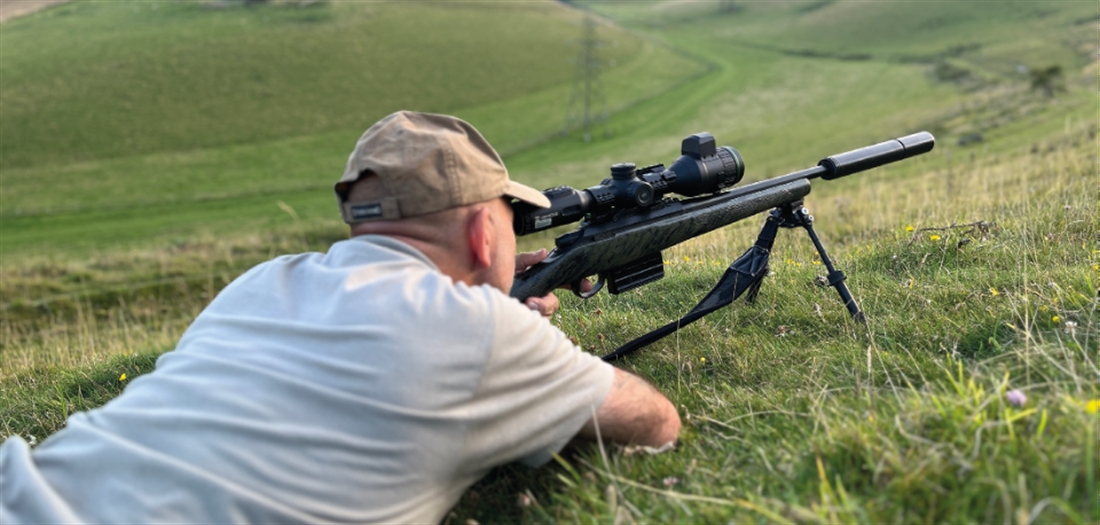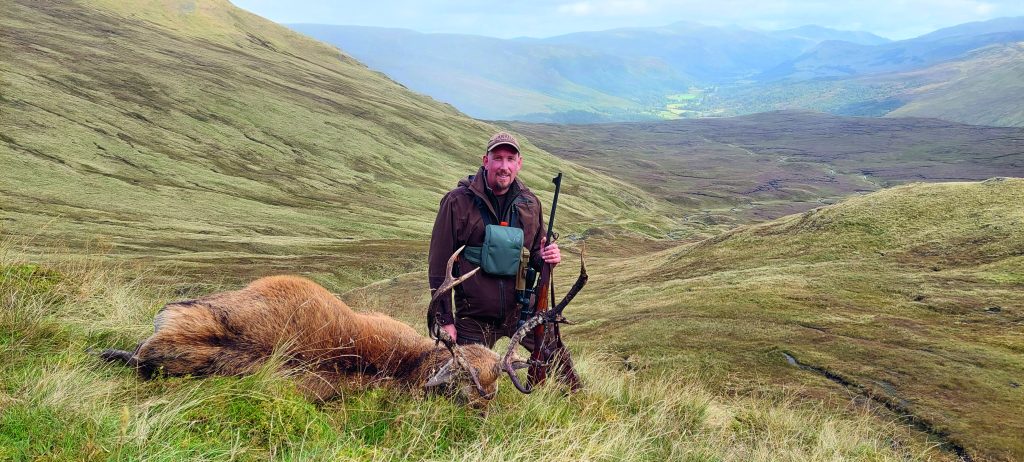AT EXTREME RANGE
Mark Ripley questions the wisdom of using a night-vision scope for long-range shooting after dark and offers some tips for consistent performance at distance

Since the British Shooting Show in February, the Hikmicro Alpex, particularly the 4K LRF version, has enjoyed considerable success. This isn’t surprising given its competitive pricing and features, including a built-in range finder and ballistics calculator. It quickly gained popularity among fox shooters and hunters targeting rabbits and small game, with some stalkers also adopting it for its light-gathering capability in daytime mode. However, I’ve wondered whether such units might inadvertently encourage shots beyond our comfort zones, potentially compromising humane shooting practices.
This is not a critique of the unit itself, which offers very accurate corrections when the right information is input. However, as a member of a Facebook page dedicated to the Alpex, I’ve seen videos and comments that suggest some shooters are using it in the field without properly testing it on paper at range. The cost of ammunition and the challenge of firing multiple long-range shots can be a deterrent, but proper testing is essential. Regardless of the app, Kestrel, or ballistic software being used, the data often requires fine-tuning to ensure accurate in-field results.
One of the most common issues is an inaccurate zero. It’s crucial to achieve a precise zero at a measured distance and confirm it with a minimum of three shots in a neat group. Personally, I prefer to shoot five rounds for added confidence. Many shooters, however, may fire one or two shots, and if they’re off, simply blame themselves for pulling the shot. Take the time to zero properly—using a bipod, sandbag, or bench rest to ensure stable, accurate shots. If your zero is off by an inch at 100 yards, it will be off by three inches at 300 yards, leading to either a miss or, worse, an injured animal. Spending extra rounds to perfect your zero will save ammunition and frustration later.
Once satisfied with your zero, record the coordinates for future reference. It’s likely that at some point, you’ll need them. If you’re serious about long-range shooting, also use quality ammunition. While inexpensive soft-point rounds may work for 100-yard foxes, for reliable, consistent performance at greater distances, a good ballistic tip is essential. The Alpex and similar units provide excellent holdover for bullet drop, but they don’t account for wind drift—a critical factor, especially at night. It’s worth asking how many shooters know the correct hold for a 10mph crosswind at 300 yards.
For long-range shots, I always advocate using a rear bag in addition to a bipod or solid rest to minimize instability, which becomes more pronounced at range. The Alpex has been especially popular because of its versatility across a range of firearms, from air rifles to centrefire rifles, with its low starting magnification catering to all. Yet, I believe a higher base magnification model would benefit the fox-shooting market. Digital scopes like the Alpex tend to pixelate at higher magnification, especially at night, so starting with an 8x optical mag would make the digital zoom more usable.
While I don’t often find a need for long-range night shooting, preferring to close the distance on unsuspecting foxes, there are times when it’s necessary. On open ground, sometimes by the time you’ve traversed hills to get closer, the fox is gone. In such cases, a calculated long shot can be worthwhile. I recall one evening sitting on a hillside, trying to deal with a vixen that was taking lambs in a 20-30mph wind. The only shot I had was from the opposite side of a valley, more than 300 yards away. Using a Pard 007 night vision add-on with my dayscope, I managed to dial in the range and hold for wind, dropping the fox with a shot to the neck at 350 yards.
In conclusion, while the Hikmicro Alpex and similar units are impressive, offering excellent tools like range finders and ballistic calculators, the basics of marksmanship still apply. Accurate zeroing, wind adjustment, and shot stability remain key, and shooters must be cautious not to over-rely on technology at the expense of skill.
Related Articles
Get the latest news delivered direct to your door
Subscribe to Rifle Shooter
Elevate your shooting experience with a subscription to Rifle Shooter magazine, the UK’s premier publication for dedicated rifle enthusiasts.
Whether you’re a seasoned shot or new to the sport, Rifle Shooter delivers expert insights, in-depth gear reviews and invaluable techniques to enhance your skills. Each bi-monthly issue brings you the latest in deer stalking, foxing, long-range shooting, and international hunting adventures, all crafted by leading experts from Britain and around the world.
By subscribing, you’ll not only save on the retail price but also gain exclusive access to £2 million Public Liability Insurance, covering recreational and professional use of shotguns, rifles, and airguns.
Don’t miss out on the opportunity to join a community of passionate shooters and stay at the forefront of rifle technology and technique.




